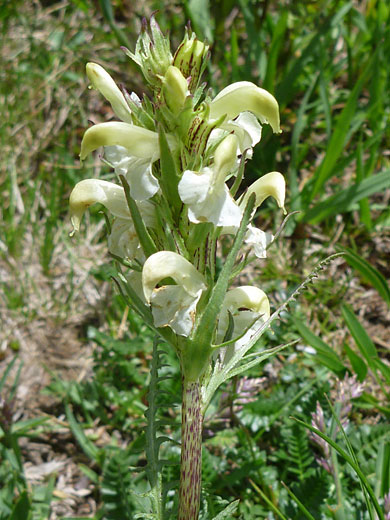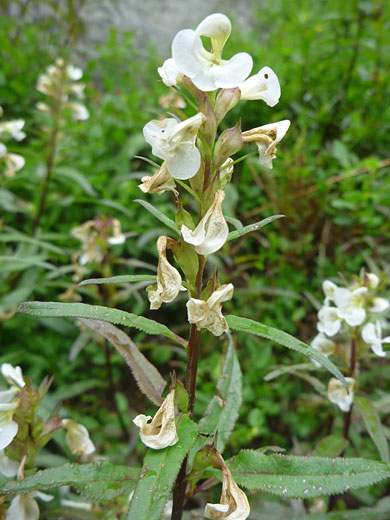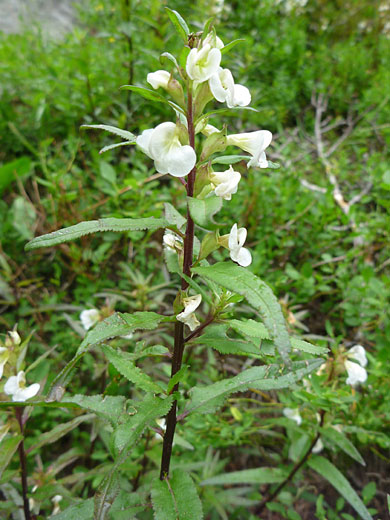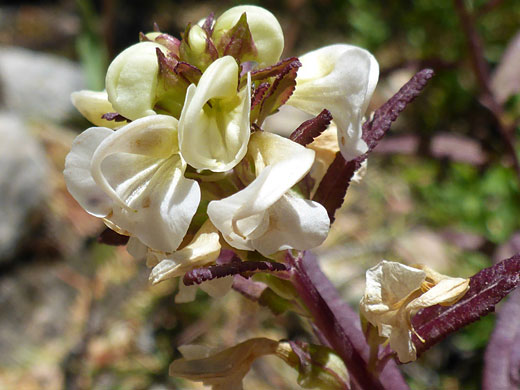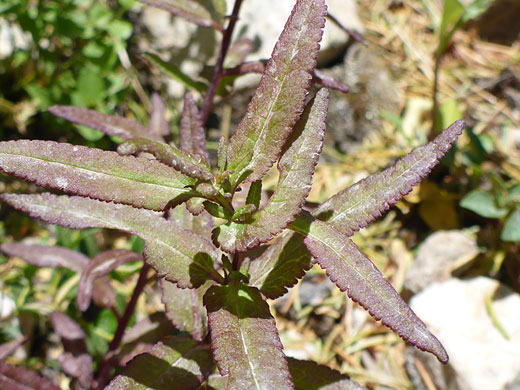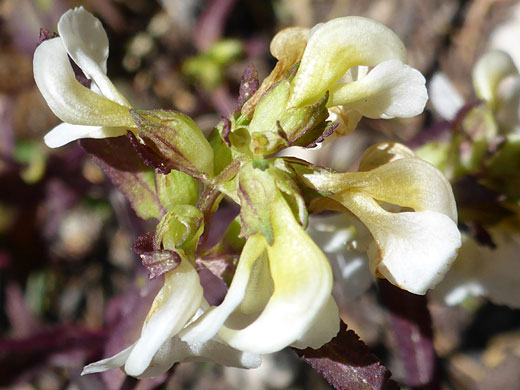Pedicularis Racemosa, Sickletop Lousewort
Plants > Wildflowers > Orobanchaceae > Pedicularis Racemosa
Common names:
Sickletop lousewort, parrot's beak
Family:
Scientific name:
Pedicularis racemosa
Main flower color:
Range:
From the Pacific Northwest to the Four Corners states
Height:
Between 6 and 24 inches
Habitat:
Coniferous forest margins, meadows; generally dry, open locations
Leaves:
Lanceolate to linear, alternate, up to 3 inches long, with coarse teeth along the edges
Season:
June to August
The unbranched, hairless stems of pedicularis racemosa are usually red/purple, and the narrow, lance-shaped leaves may also have a reddish tint, more so early in the season or during long periods of cloudy weather. Leaves are longest (up to 3 inches) around the middle part of the stem.
Flower corollas are usually white, sometimes pale pink or pale yellow, composed of an arching upper lip that extends to a sharp, narrow, downwards curving point, and a much wider, three-lobed lower lip. The common names sickletop lousewort and parrot's beak refer to the shape of the upper lip. Flowers form in small groups at the top of the stem and the upper leaf axils. Beneath the flowers are leaf-like bracts, similar in length or slightly longer.
Flower corollas are usually white, sometimes pale pink or pale yellow, composed of an arching upper lip that extends to a sharp, narrow, downwards curving point, and a much wider, three-lobed lower lip. The common names sickletop lousewort and parrot's beak refer to the shape of the upper lip. Flowers form in small groups at the top of the stem and the upper leaf axils. Beneath the flowers are leaf-like bracts, similar in length or slightly longer.
All Contents © Copyright The American Southwest | Comments and Questions | Contribute | Site Map


